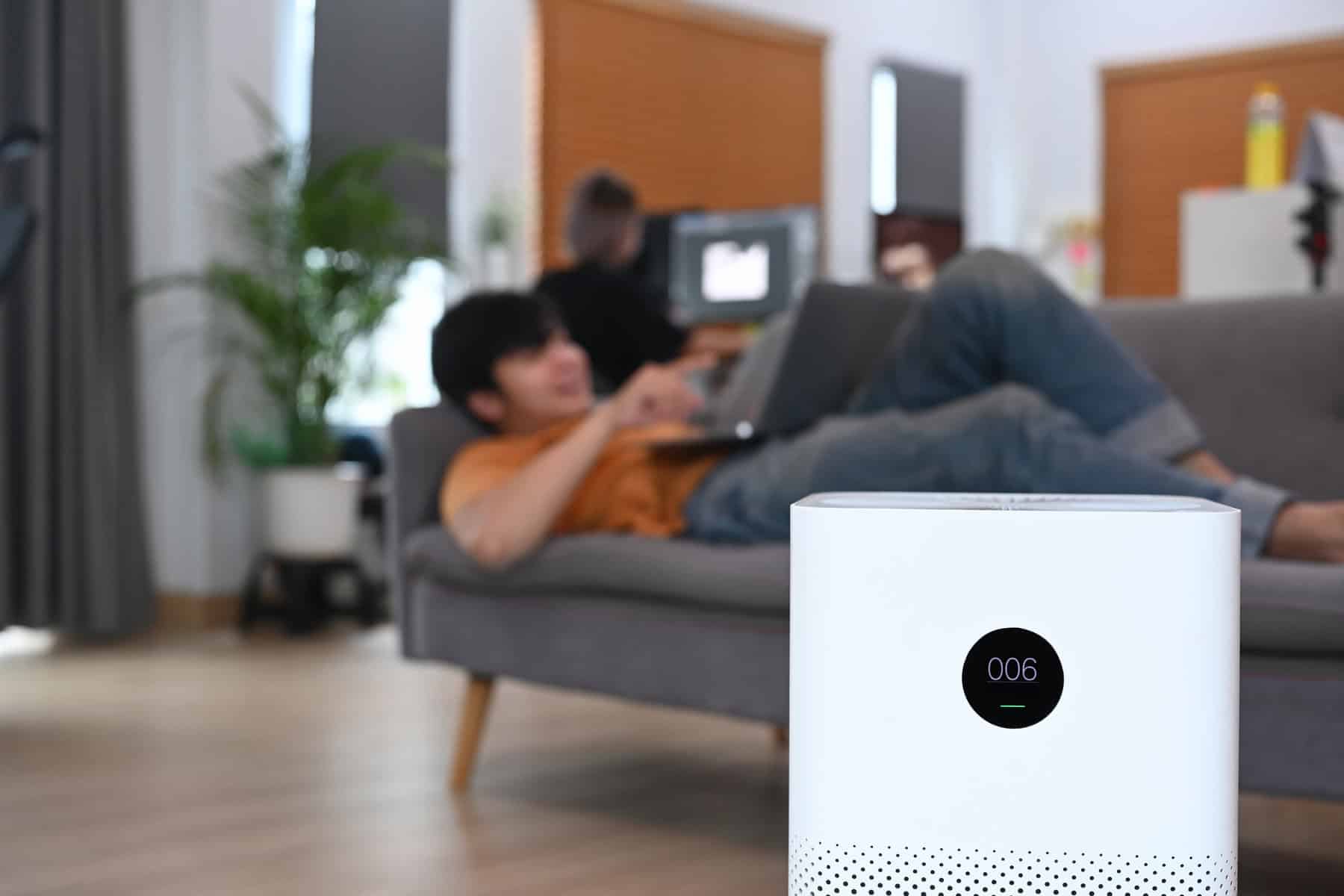
Indoor air quality significantly impacts your health and well-being. Poor air quality can lead to respiratory issues, allergies, and a general sense of discomfort in your home. Fortunately, improving the air you breathe indoors doesn’t require complex or expensive solutions. Simple changes can make a big difference in enhancing the quality of your indoor environment.
One of the easiest ways to improve indoor air quality is by keeping your home clean and dust-free. Regular cleaning can reduce the number of pollutants and allergens in the air, such as dust mites, pet dander, and mold spores. A clean home not only looks better but also feels fresher and healthier.
In addition to a clean home, using air purifiers and adding indoor plants can further enhance air quality. Air purifiers can effectively remove contaminants, while plants can naturally filter the air and add a touch of greenery to your home. These additions are simple yet effective tools in maintaining a healthy indoor atmosphere.
Furthermore, improving ventilation and ensuring proper airflow is crucial. Good ventilation helps to remove stale indoor air and bring in fresh outdoor air, diluting pollutants and reducing humidity levels. Proper airflow prevents the buildup of harmful substances and keeps your home feeling fresh.
Lastly, regular maintenance of your HVAC system can play a significant role in keeping indoor air quality high. A well-maintained system filters and circulates air efficiently, ensuring that the air you breathe is clean. Routine checks and timely filter changes can make all the difference in maintaining a healthy living environment.
By implementing these straightforward and accessible steps, you can greatly improve the quality of the air in your home, making it a safer and more enjoyable place to live.
Keep Your Home Clean and Dust-Free
Keeping your home clean is crucial in maintaining good indoor air quality. Dust and dirt particles accumulate quickly and can become air pollutants if not managed properly. Regularly vacuuming carpets, rugs, and upholstery helps to remove dust mites and other allergens. Use a vacuum cleaner with a HEPA filter to ensure that fine particles are trapped and not released back into the air.
Dusting surfaces with a damp cloth is also effective in capturing dust particles. Dry dusting can often spread dust into the air, but using a damp cloth helps to trap and remove it. Pay special attention to areas that tend to collect more dust, like shelves, blinds, and baseboards. Regular mopping of hard floors also helps in reducing the amount of dust and allergens in your home.
Don’t forget about hidden or less obvious areas such as behind and under furniture, as these places can also accumulate significant amounts of dust and dirt. Washing bedding and curtains frequently can help eliminate dust mites and other allergens. Consistently practicing these cleaning habits keeps your home free from dust and ensures that the air you breathe is cleaner and healthier.
Use Air Purifiers and Plants
Air purifiers can significantly enhance the air quality in your home. These devices work by removing contaminants like dust, pollen, pet dander, and even some bacteria and viruses from the air. Select an air purifier with a HEPA filter, as it is highly effective at capturing small particles. Position the air purifier in rooms where you spend the most time, such as the bedroom or living room, to maximize its benefits.
Adding indoor plants is another simple way to improve air quality. Plants act as natural air filters, absorbing carbon dioxide and releasing oxygen. Certain plants like spider plants, snake plants, and peace lilies are particularly good at removing toxins like formaldehyde and benzene from the air. Plus, they add a touch of greenery, making your home more aesthetically pleasing.
By combining the use of air purifiers with indoor plants, you create a more comprehensive approach to filtering and refreshing the air in your home. This duo helps maintain a continuous circulation of clean air, promoting a healthier and more pleasant living environment.
Improve Ventilation and Airflow
Good ventilation is essential for maintaining quality indoor air. Proper ventilation helps to remove stale air, excess moisture, and pollutants, replacing them with fresh air. An easy way to improve ventilation is by opening windows and doors when the weather permits. This allows outdoor air to circulate and freshen up your indoor spaces.
Using exhaust fans in areas like the kitchen and bathroom can also help. These fans remove humidity and odors, preventing moisture build-up that can lead to mold growth. Ensure that the fans are vented to the outside and not just recirculated within the home. Ceiling fans are another great way to improve air circulation and keep the air moving.
If you live in an area where opening windows is not feasible due to external pollution or extreme weather, using a mechanical ventilation system might be the best option. Systems such as energy recovery ventilators (ERVs) can bring in fresh air and expel stale air while minimizing energy loss. By taking these steps, you ensure that your home has a continuous flow of fresh, clean air, making it a healthier environment for everyone.
Maintain Your HVAC System Regularly
Your HVAC system plays a crucial role in keeping your indoor air clean and comfortable. Regular maintenance is key to ensuring it runs efficiently and effectively. Schedule professional HVAC inspections at least twice a year—once before the cooling season and once before the heating season. Technicians can check for issues like leaks, dirty coils, and worn-out parts, helping to keep your system in top shape.
Between professional visits, change the HVAC filters regularly. Dirty filters can restrict airflow and reduce the system’s efficiency, leading to poor air quality and higher energy bills. Most filters should be changed every 1 to 3 months, but check the manufacturer’s recommendations for your specific system.
Additionally, keep the area around your HVAC unit clean and free from obstructions. Clear away dust and debris to prevent them from entering the system and causing damage. By combining regular professional maintenance with these simple steps, you can improve your HVAC system’s performance and ensure cleaner, healthier air in your home.
Conclusion
Improving indoor air quality doesn’t have to be complicated or costly. Simple changes like keeping your home clean, using air purifiers and plants, enhancing ventilation, and maintaining your HVAC system can make a significant difference. These steps create a safer, healthier living environment by reducing pollutants and increasing fresh air circulation.
By staying proactive about indoor air quality, you protect yourself and your family from potential health issues associated with poor air conditions. These changes not only improve the way your home feels but also ensure that everyone breathes easier.
If you want professional help maintaining your HVAC system or have any questions about improving your indoor air quality, contact My Jockey today. We provide expert HVAC, plumbing, and air quality management to ensure your home is comfortable and safe year-round. Give us a call to schedule your service and breathe easier knowing your home is in good hands.
